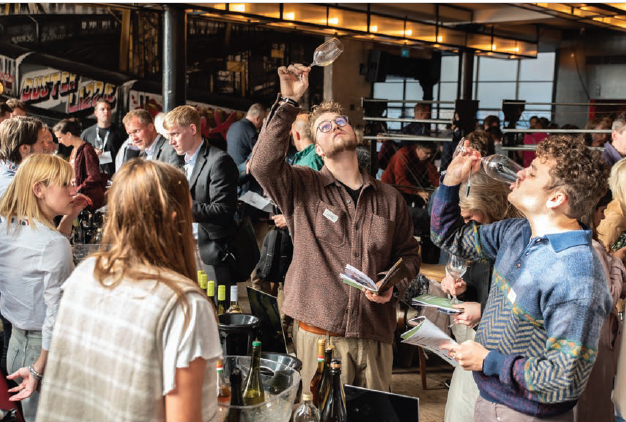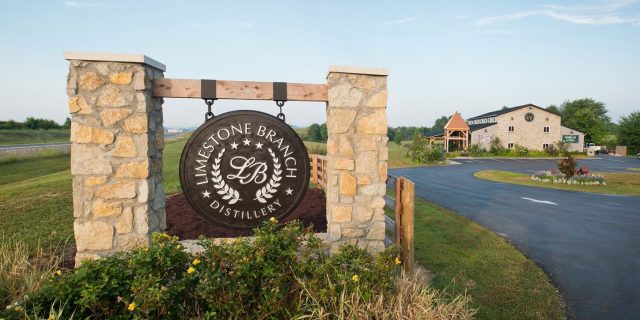Meet the Maker: Stephen Beam
Douglas Blyde speaks with Limestone Branch Distillery’s Stephen Beam about bringing Yellowstone Bourbon back to life and how his interest in horticulture helps with his whiskey work.

Describe the sights, smells, and atmosphere of Limestone Branch Distillery?
Nestled in the rolling hills of Central Kentucky, Limestone Branch Distillery captivates the senses from the moment you arrive. From the start, I knew this site was destined to be our distillery – a place we designed to be efficient, bright, airy, and inviting. Step inside, and the intoxicating aroma of fermenting grains – corn, rye, and barley – fills the air. Two moments never fail to thrill me: when the mash bubbles to life and when the still begins its enchanting work. I revel in the anticipation as the “white dog” overflows the “parrot,” starting its journey to bourbon. In our small distillery, visitors can experience every part of the process. Only when I began distilling did I truly understand why my family cherished this craft for over 230 years.
How does Limestone Branch differ from a Scottish distillery?
While we use pot stills like the Scots, the similarities end there. Our grain bill is distinct, consisting primarily of corn, with rye and malted barley. Unlike Scottish distilleries, we don’t lauter our mash – instead, we ferment and distil “on the grain,” a method handed down through generations of my family – not just the Beams, but also the Dants, another pioneering distilling lineage. Yellowstone Bourbon, founded by J. Bernard Dant in 1872, holds special significance. When my brother and I began our distilling journey in 2010, we reclaimed the Yellowstone brand, joining forces with Luxco, who had held it for 25 years. Reviving Yellowstone felt like bringing history full circle – both sides of my family were intertwined with its legacy, and I grew up with it in our home. It was only natural to bring it back where it belongs, to Limestone Branch.
How does your interest in horticulture influence your approach to whiskey-making?
People often wonder how a degree in Landscape Architecture and a love for plants translate to distilling. When I once asked my father about becoming a master distiller, he said most modern distillers were chemical engineers. That put the dream on hold – chemistry wasn’t my strong suit, and the bourbon industry didn’t look promising. Yet, the idea never let go. Fascinated by gardening from a young age, I loved exploring the science of nurturing plants. Growing plants and cultivating yeast share much in common – both need patience, care, and a knack for coaxing the best results. Whiskey-making, like gardening, is a creative process – both bring nature’s raw potential to life.
What do you find most exciting about the intersection of science, art, and craft in distilling?
Distilling, when done right, is the perfect harmony of all three. You simply can’t create great whiskey without balancing them. Art without science risks leaving flavour untapped, while science without art produces a soulless spirit. The craft lies in blending these elements seamlessly, transforming raw ingredients into something extraordinary. For me, the thrill comes from crafting something unique, driven purely by passion. That passion is the secret sauce – the invisible ingredient which heightens whiskey from good to unforgettable.
Partner Content
Why did you create Yellowstone American Single Malt Whiskey?
American Single Malt is the newest frontier in whiskey, and while we’re still awaiting official standards from the TTB [Alcohol and Tobacco Tax Trade Bureau], I saw an opportunity to create something unique – an unapologetically American single malt which doesn’t try to imitate other styles. Using the same barley and techniques as our bourbons, we ferment and distil from a mash (with grain solids) in a column still, ageing the spirit in new #3 charred oak barrels for four years. The result? A bold whiskey with vibrant cereal, citrus, and honey notes, finishing sweet and satisfying. At 54% ABV, it packs a punch yet remains remarkably approachable. I’m proud of it, and it’s been met with tremendous enthusiasm.
What is the best way to enjoy Yellowstone American Single Malt Whiskey?
Any way you like, of course. Personally, I prefer my whiskies neat to fully appreciate their character. However, with its grain-forward notes and bold 54% ABV, this whiskey shines beautifully in cocktails as well.
If you had a superpower, what would it be?
To see into the future – and, yes, I’d start with lottery numbers! But seriously, I’d love to peer into the future of a barrel, watching how it transforms white dog into liquid gold. To witness the alchemy, the interplay between spirit and wood, would be incredible. Even with all our science, that part of the process still feels like magic.
Who would you raise a glass of Yellowstone American Single Malt Whiskey to, past or present?
I’d stroll into the Talbot Tavern and raise a glass to Minor Case Beam and J. Bernard Dant – two legends whose favourite watering hole deserves a toast of its own. Imagine the wisdom they’d pour alongside the whiskey…
Yellowstone American Single Malt Whiskey is available from Master of Malt, House of Malt, and Amazon. yellowstonebourbon.com
Related news
Meet The Maker: Sam Harrop MW, Bird In Hand
Meet the makers: Ross Archer and Russell Spratley, Spiritfilled





